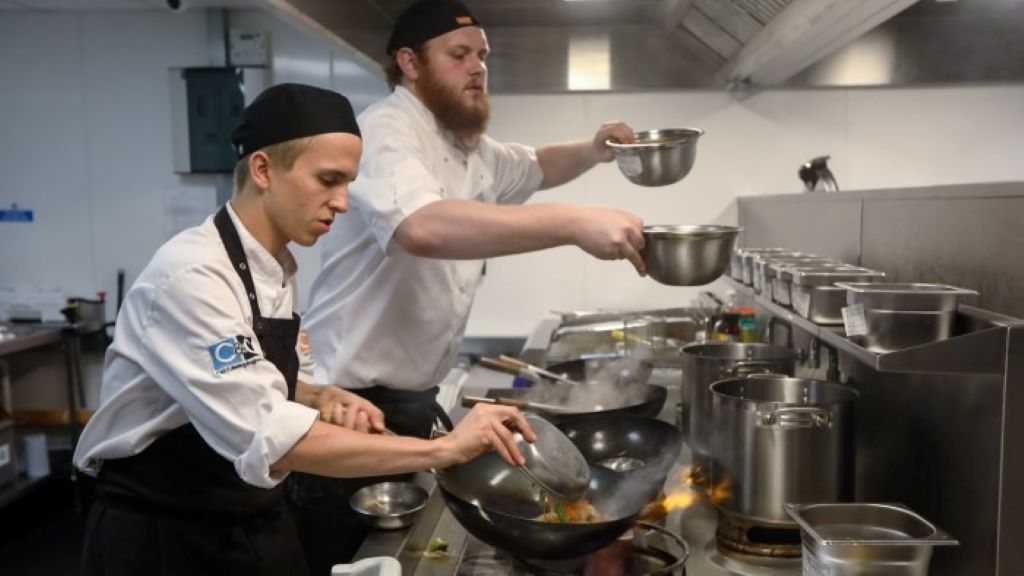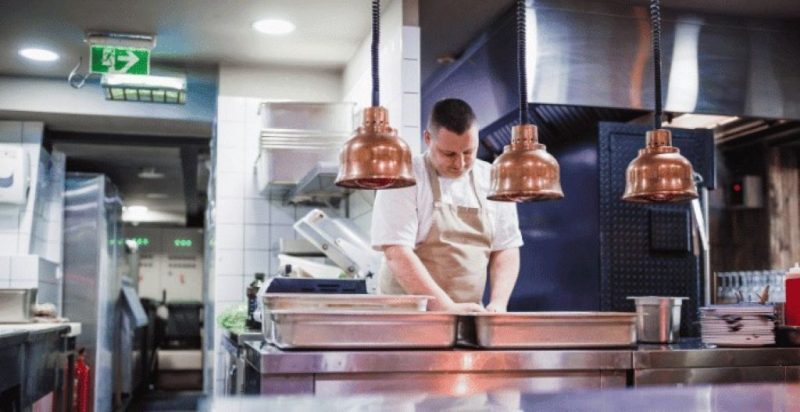Running a successful restaurant takes more than just great food. Behind every memorable dining experience lies a well-organized, fast-paced kitchen that functions like a finely tuned machine. Whether you’re an aspiring restaurateur or a seasoned chef, how to manage a restaurant kitchen efficiently should be at the forefront of your priorities. Streamlined kitchen management helps reduce waste, improve staff productivity, and enhance the overall guest experience.
As competition in the food industry continues to grow, efficiency isn’t just a bonus—it’s a necessity. Leveraging smart tools and strategies from reliable sources like Imindsoft.biz can give your kitchen a competitive edge. From inventory control to team coordination, this ultimate guide walks you through the essential components of efficient kitchen management.
Why Efficient Kitchen Management Matters
An efficiently managed kitchen saves time, reduces food waste, and keeps both the front and back of house in sync. The pressure to deliver timely and high-quality meals is immense, and without proper systems, it’s easy for operations to spiral into chaos.
In many cases, inefficiencies are due to poor communication, lack of planning, or outdated equipment and procedures. However, when operations are streamlined, it leads to higher staff morale, lower overhead costs, and happier customers.
For a deeper dive into how to manage a restaurant kitchen, this detailed resource provides valuable insights into both high-level strategies and daily tactics to keep your kitchen running smoothly.
-
Build a Strong Team Structure
Efficient kitchen management starts with your team. Each staff member should have a clearly defined role, from the executive chef to dishwashers.
- Executive Chef: Oversees all kitchen operations and maintains quality.
- Sous Chef: Acts as second-in-command and manages staff in the executive chef’s absence.
- Line Cooks: Focus on food preparation in specific kitchen stations.
- Expeditor: Acts as the communication bridge between the kitchen and front-of-house staff.
A well-structured team enhances accountability and ensures that everyone knows what’s expected of them. Conduct regular training and performance reviews to help staff grow and stay aligned with kitchen standards.
-
Create and Enforce Standard Operating Procedures (SOPs)
Standard Operating Procedures (SOPs) are essential to ensure consistency, food safety, and efficiency in the kitchen. These documents outline how tasks should be completed, from preparing sauces to sanitizing equipment.
Having clear SOPs:
- Reduces training time for new hires
- Minimizes errors and rework
- Enhances food safety and compliance with regulations
You can find helpful templates and resources for creating kitchen SOPs from industry organizations like ServSafe.

-
Master Inventory Management
Proper inventory management ensures that your kitchen is always stocked with the right ingredients without overbuying or wasting resources.
Here are best practices to improve inventory control:
- Use the First-In, First-Out (FIFO) method to minimize spoilage.
- Schedule regular inventory audits.
- Track food cost percentages and adjust orders accordingly.
- Utilize digital inventory systems to streamline tracking and automate reordering.
Adopting tools from platforms like Imindsoft.biz can help optimize your inventory processes through smart analytics and automation.
-
Embrace Kitchen Technology
Technology can play a huge role in streamlining your kitchen operations. Kitchen display systems (KDS), point-of-sale (POS) integrations, and scheduling tools can automate manual tasks, reducing human error and saving time.
Popular tools include:
- Kitchen Display Systems: Replaces paper tickets with digital screens for easier order tracking.
- POS Integration: Syncs orders from the front-of-house directly with the kitchen.
- Scheduling Software: Allows managers to plan shifts, track hours, and monitor labor costs.
These technologies free up your staff to focus more on quality food preparation rather than paperwork and administrative tasks.
-
Streamline Food Prep and Station Layout
A cluttered kitchen layout can cause delays and increase errors. Therefore, organize your kitchen in a way that promotes smooth workflow and clear separation of tasks.
Tips to improve kitchen layout and prep stations:
- Group equipment and supplies by station.
- Create designated prep areas for vegetables, proteins, and sauces.
- Label containers clearly and consistently.
- Use color-coded cutting boards for food safety.
Efficient layouts not only speed up service but also enhance safety and reduce cross-contamination risks.
-
Foster Effective Communication
Communication breakdowns can cause everything from delayed orders to workplace accidents. Encourage open lines of communication across your kitchen staff.
Best practices include:
- Daily pre-shift meetings to align on specials, events, and roles.
- Clear hand signals or kitchen buzzers during busy hours.
- Collaborative software tools for task assignments and checklists.
An open and respectful environment makes it easier for your team to voice concerns and solve problems together.
-
Monitor Performance and Adjust
Finally, constantly monitor your kitchen’s performance to identify areas for improvement. Track key performance indicators (KPIs) such as:
- Ticket time (from order to service)
- Food cost percentage
- Staff turnover rate
- Customer complaints or feedback
Use this data to guide decisions on training, staffing, and process changes. Periodic reviews can help keep your kitchen agile and responsive to shifting demands.
Read More: The Dawn of Intelligent Living: Why Smart Home Devices are Shaping the Future of Modern Homes
Frequently Asked Questions (FAQs)
-
What are the biggest challenges in managing a restaurant kitchen?
Some of the biggest challenges include maintaining food quality during peak hours, ensuring staff accountability, minimizing food waste, and keeping up with health regulations.
-
How can I train my kitchen staff effectively?
Start with detailed SOPs, conduct hands-on training, use role-playing scenarios, and offer regular feedback. Cross-training team members can also improve flexibility and coverage.
-
What is the best way to handle kitchen staff conflict?
Address conflicts early, listen to all parties involved, and create a respectful space for resolution. Having a neutral manager mediate discussions can help avoid escalation.
-
How do I reduce food waste in my kitchen?
Track food usage closely, store ingredients properly, implement FIFO, and repurpose surplus ingredients creatively. Monitoring portions and training staff on efficient prep techniques also helps.
-
What software can help with kitchen management?
Software like KDS systems, POS integrations, and inventory tracking apps are invaluable. Platforms like Imindsoft.biz offer tools that specifically cater to kitchen efficiency and automation.
Conclusion
Understanding how to manage a restaurant kitchen efficiently is a skill that combines leadership, organization, and innovation. From hiring and training the right team to using cutting-edge tools and procedures, each element contributes to a smooth-running kitchen.
By implementing the strategies discussed in this guide and leveraging tools from platforms like Imindsoft.biz, restaurant owners and managers can improve productivity, reduce costs, and enhance the customer experience.
Success in the kitchen doesn’t happen overnight—but with a commitment to continuous improvement, it’s within reach for every restaurant.
Read More: Working Full-Time In A Busy Restaurant

